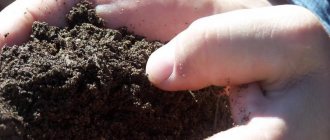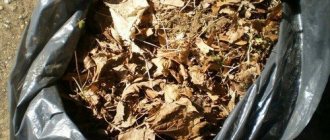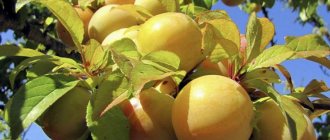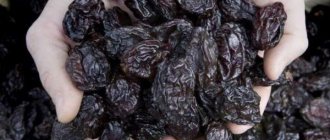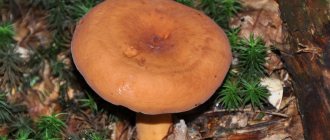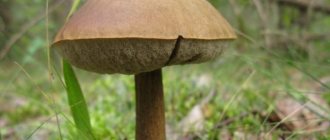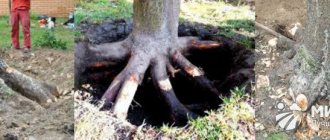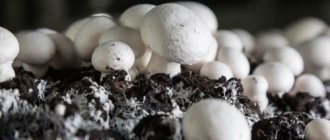In autumn there is a lot of fallen leaves. Do not rush to throw away or burn fallen leaves. Burning fallen leaves can result in a hefty fine. It is better to make compost from leaves in bags. This way you will have excellent fertilizer ready in just 1 year and completely free of charge. There is no need to buy a garden composter. Moreover, a garden composter costs from 1000 hryvnia to 3 thousand. Garbage bags cost only 10 hryvnia, and any summer resident can find a rake.
Many gardeners and summer residents use the idea of compost in bags. Fertilizer is simply necessary in the spring to improve fertile soil and to feed plants. Many summer residents have a number of questions about compost in bags. We will try to answer the most common questions.
Which leaves are suitable for compost in bags?
Fallen leaves of fruit trees are best suited for compost. The leaves of apple, pear, plum, and cherry rot well in winter. Birch and grape leaves are perfect for compost. It is better to chop maple leaves for compost, as they are too large. All small leaves can be put into compost without chopping.
Bagged leaf compost does not make very well from oak leaves. Tannins slow down the natural processes of decay of organic matter. From practice, it was noticed that walnut leaves do not rot well.
Fallen leaves as fertilizer
Fallen leaves can be used as fertilizer in various ways. We will discuss this in more detail below.
Mulch
This is the easiest way. Typically, leaf mulch is used for ground feeding of fruit trees and berry bushes. The whole procedure goes like this:
- The earth is dug around the tree within a radius of 1 meter.
- After this, about 20 cm of soil is removed. The soil must be removed with extreme caution so as not to damage the root system of the trees.
- Add 0.5 kg of chicken manure to the resulting hole, and then cover it with leaves.
- Add a little water.
- In this form, the dug tree should stand for 3 days, after which the hole should be covered with earth.
You may be interested in: Fertilizing thuja in the fall: when, what fertilizers to use
In this way, apple trees, pears, cherries, apricots, plums, walnuts, gooseberries, raspberries, etc. are well fertilized.
Compost
Another way to use leaves as fertilizer is through compost. It is very simple to prepare; you only need to follow a few rules. The recipe is as follows:
- In the fall, dig a hole measuring 1 m by 1 m. The depth should not be more than 1.5 m.
- Collect the leaves and place them in an earthen hole.
- Tamp down thoroughly and fill the entire pile with water, then tamp down again.
- Fill with soil 20-30 cm thick.
- To speed up the process of leaf decay, you can prepare a solution of nitrogen fertilizer and pour it into the hole.
In the spring, it is fashionable to plant tomatoes, peppers, cabbage and other vegetables in the place of this hole. But in the fall, after harvesting, you need to dig out a hole and scatter the resulting compost from rotted leaves throughout the area. If there is some compost left in the earthen pit, then it can be covered with earth and left for next year.
When preparing compost, keep in mind that it is better to take leaves from the forest and away from roads. Near large highways and cities, the soil is harmful, so the foliage may also contain harmful components.
What can you make compost in bags with your own hands besides leaves?
Quick compost is made from grass, rotten apples and pears. In summer you have to often weed the beds. All weed will do just fine. The only requirement for weeds is to clear the soil. The roots of the weeds need to be thoroughly cleaned from the soil and placed in a plastic bag. Weeds should not be covered with soil, as they will germinate and instead of fertilizer you will get a mobile bed of weeds.
There are often cabbage stalks left in the refrigerator. They will perfectly complement bags of future compost. Peeling potatoes, apples, beets and carrots will also come in handy.
How to prepare compost in bags from leaves. Step-by-step instruction
Tear large leaves for compost by hand or chop them using special equipment. There is no need to chop the grape leaves. Place fallen leaves in trash bags. You can use construction bags, sugar bags. I prefer the latter. The bags already have weaving. Moisture and air penetrate well deep into the compost, which promotes rapid rotting.
Leaves for compost need to be compacted well in bags. If the leaves are dry, then you need to fill them with water. Wet leaves will rot and we will get proper compost.
When the third part of the bag is filled, add a layer of soil. Pour about 5 centimeters of soil into the bag.
We tamp the next layer of leaves into a bag. Don't forget to water.
If you use garbage bags, you should make holes in the bags. This will allow moisture to penetrate into the compost. The penetration of air and moisture into the leaf compost is a necessary condition.
Tie the full bag and place it in a convenient place.
How to make compost from tree leaves in 7 days
To prepare fertilizer quickly, it is worthwhile to diversify the mixture a little; not only leaves will be useful for composting, but also hay, straw and even paper. It is recommended to grind all this thoroughly. This will ensure uniform distribution of oxygen and moisture, which ensures more productive work for compost microbes.
You can grind the components by passing them through rotary lawn mowers several times.
If you have manure or green plants on hand, you can also use them for fertilizer, after crushing them.
After this it is recommended:
- Place the resulting crushed mixture into a pre-dug hole; if it turns out to be a bit dry, moisten it and mix thoroughly. If necessary, you can additionally moisten the mixture and do not let it dry out;
- Cover the pit with plastic to preserve heat;
- Watch the temperature change, it should start to rise on the first day;
- Systematically mix the contents of the pit to supply oxygen necessary for compost microbacteria.
By the end of the week the compost will be ready, but to be sure, it is recommended to let it sit a little longer, ideally another week. You can determine when a fertilizer is suitable for use by its temperature; it should not exceed + 38 C, otherwise it may harm the plants.
When is it better to make compost in bags with your own hands in spring or autumn?
Many summer residents asked which compost is better, autumn or spring. Compost in bags can be prepared in both spring and autumn. I prefer fall compost because of the increased humidity and plenty of leaves to compost.
Compost rots in winter. I always leave the bags out in the open. Snow provides the necessary warmth and moisture. Compost maturation continues throughout spring and summer.
The bags take up little space. They can be stacked or placed in a row along the fence behind the house.
Compost making device
Of course, they read the title and thought that they needed to get the device from somewhere. Don’t take it or buy it, but build it yourself, from the materials that the owner likes best or with which he knows how to work. It could be lumber, or it could be metal pipes. You can use fifty boards. It is also not difficult to buy barrels, and sometimes it is possible to receive one as a gift if it is not an exchange container. You can ask the manufacturers of dietary supplements or dry herbal mixtures.
Barrels are also not difficult to buy
Pipes can be found at scrap metal collection points, from the same plumbers in housing offices, which are now called management companies. Yes, and a neighbor, doing renovations in the bathroom, will not refuse to give you used pipes: after all, he needs to carry them to the garbage disposal, and here you are ready to provide help - to take all this “good” for yourself.
I’ve already figured out what we can use to build such a device: several years ago, we brought a whole truckload of old pipes for our three families. Thanks to the plumbers for helping. I have already managed to puzzle my husband with a new idea. Let's see how it comes to life.
Now let's look. I offer you five videos, they are not in Russian, I don’t have a translation yet. But everything is clear: what to do, how to do it, what kind of compost you get in a week.
The nuances of making a device with your own hands:
An undoubted plus is that the container is convenient to rotate with a handle:
Creating a compost device from a plastic barrel on a wooden frame:
You can install two barrels on one frame:
Mechanical drive device:
Why leaf compost in bags and not a compost pit?
- A compost pit takes up more space on a personal plot.
- The bags produce quick compost, which cannot be said about a compost pit.
- Compost bags take up little space.
- The bags are mobile and easy to drag from one place to another.
- Compost can be stored in leaf bags for more than one year.
- You can make a mobile garden bed from a bag of compost.
- No smell.
- More aesthetic appearance.
- There are no beetle larvae.
And that's not all the benefits of bagged compost.
Foliage Features
The most useful foliage is considered to be nut. It is added to compost or simply burned. Walnut ash not only feeds garden crops, but also combats high soil acidity.
Birch leaves, due to their small size, rot very quickly. Based on them, it is possible to obtain fast and high-quality organic matter. But oak trees need at least a year to decompose.
It is noted that oak litter is famous for its high content of acids and tannins, the excess of which can harm garden crops. Because of this specific composition, oak foliage overheats for a long time.
Aspen leaves, after decomposition, restore the nitrogen content in the soil. In addition, the soil is enriched with magnesium, calcium and potassium. However, they also overheat for a very long time and tend to stick together, blocking the access of oxygen.
Oak and aspen leaves are added in small quantities to the general compost. Some gardeners give them a separate place for long-term overheating.
Alder foliage is considered the most valuable in terms of nutrient content, followed by maple and birch foliage.
Conifer needles take at least 3 years to rot. However, such organic matter is indispensable for planting acidophilic crops - connoisseurs of acidic soil. Among them are rhododendrons, camellias, hydrangeas, azaleas, and representatives of the heather family.
Note. When using litter, take into account the following: oak, chestnut and birch foliage alkalize the soil, while aspen and linden foliage, on the contrary, acidify it.
Which compost bags to choose
Many gardeners ask what bags are suitable for making home compost. It is better to choose thick bags. Garbage bags are fine if they have a high density. Cheap bags will immediately tear and the leaves will fall apart. It is better to choose construction bags. It is advisable to choose dark colored bags. Woven polypropylene construction bags can be different. There are dense bags, and there are thin ones (from under sand). Thin bags turn into dust in the sun. Use large bags of 70 liters or 160 liters.
Composition of compost from fallen leaves
Dry leaves are a carbon-containing component that takes a very long time to turn into humus unless nitrogen is added to it in the form of greens or urea. The main thing is to maintain the correct proportions of the components: for each nitrogen part you need to add 3 carbon ones.
If you use only litter for composting, the leaf humus will take about 2 years to mature. When using various biodestructors – a year. This is not profitable, since fertilizer must be applied annually, or a good harvest can hardly be expected.
To speed up the process, you need to collect leaves from the area - any leaves. If oak or coniferous trees grow, then their total number should not exceed 15% of the total mass. The fact is that these substances increase the acidity of the fertilizer. If there are a lot of them, then leaf humus will be unsuitable for many plants that prefer a neutral or slightly acidic environment.
Video: What to do with fallen leaves
There is a recipe that allows you to use only oak leaves for composting, but it contains chicken manure, the pH of which is above 7 units. These two components balance each other, so the acidity in leaf humus remains within acceptable limits.
When will home compost be ready?
Compost ripening lasts 1 year from autumn to autumn of the next year. You can use a compost accelerator, then home compost can be used in the spring.
In spring, the compost still contains admixtures of twigs and cuttings, pieces of not quite rotten leaves. By autumn this is already ready soil. Homemade compost is rich in minerals.
This is an excellent fertilizer for growing vegetables. Can be used as fertilizer for flowers and shrubs. Even coniferous shrubs grow well. Homemade leaf compost in bags is great for mulching the soil.
How to use litter and humus
Vegetable crops, fruit trees, and berry bushes are fertilized with leaf litter. A square measuring 120x120 cm is dug around a tree or bush. The top layer of soil 20 cm thick is removed without damaging the root system. Place the collected material in the resulting recess and sprinkle it with 2 cups of chicken manure. After 2-3 days, the hole is covered with soil. Before falling to the ground, the leaves store energy, and in winter they give it to the tree, and also protect it from frost.
You can turn fallen leaves into mulch using a lawn mower. The crushed material is an excellent plant food. Mulch scattered around the area attracts hedgehogs and birds. They, in turn, help the owners of the site fight harmful insects.
Forest litter is plowed to a depth of 20 cm along with mineral fertilizers. This method gives a good harvest of tomatoes. When making humus, chicken droppings or Californian worms are added to it. This is done to speed up decomposition. The microbiological starter Baikal EM-1 works even better. Before adding it to the soil or compost heap, this preparation is diluted with water in a ratio of 1:500. This solution is used to treat hay and weeds, tops and plant branches.
Any compost is acidic. Therefore, it is recommended to add a deoxidizing agent in the form of chalk, lime or dolomite flour in the amount of 0.5 cups per 15 kg of fertilizer. You can add kitchen scraps from cooking fish or meat.
